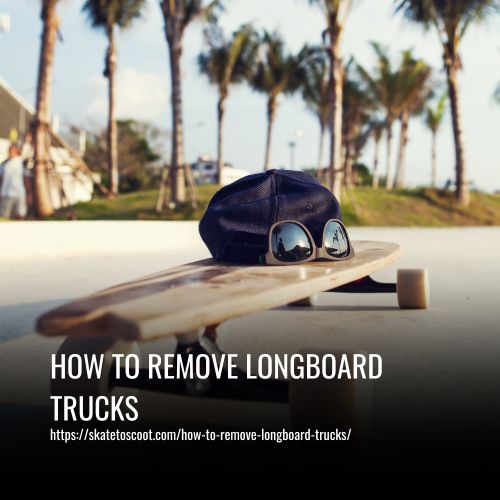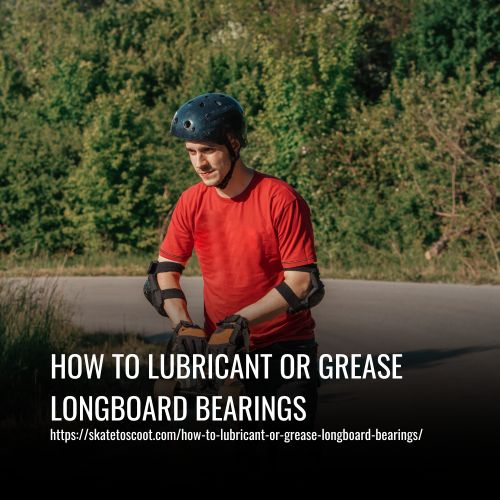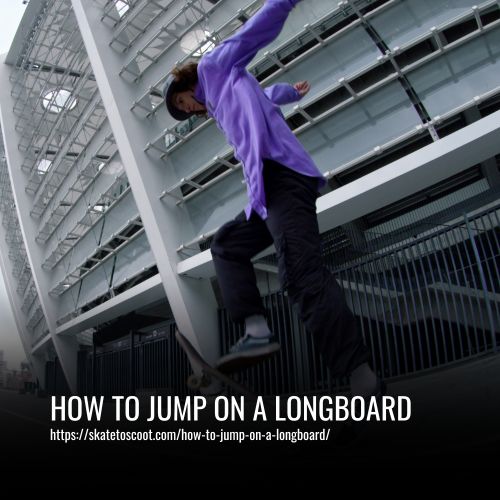As an Amazon Associate we earn from qualifying purchases.
Are you tired of feeling like you’re stuck in slow motion while riding your longboard? Do you envy those riders who effortlessly glide past you with lightning speed? Well, it’s time to level up your longboarding game and learn how to gain speed on a longboard.
Speed is not only exhilarating but also essential for covering more ground and exploring new territories on your longboard. Luckily, there are several techniques and strategies you can implement to increase your speed and take your longboarding experience to new heights.

How to Make Your Longboard Faster
If you’re a longboard enthusiast looking to increase your speed and take your riding to the next level, you’ve come to the right place. From choosing the right wheels and bearings to honing your technique and investing in safety gear, we’ve got you covered. So gear up, hit the pavement, and get ready to ride with increased speed and confidence!
1. Clean Your Longboard Bearings
To improve the speed and performance of your longboard, it is essential to clean and lubricate your bearings regularly. Over time, dirt, dust, and debris can accumulate in your bearings, causing friction and slowing down your ride. Cleaning your bearings will help maintain their efficiency and ensure a smooth and fast ride.
Here are the steps to clean your longboard bearings:
- Unscrew and remove the nut that holds the first wheel onto the axle.
- Pull the wheel out slightly, without completely removing it from the axle.
- Wiggle the wheel on the axle until you feel the bearing pop loose inside the wheel.
- Remove the wheel from the axle, and the bearing should remain on the axle.
- Flip the wheel around and slide it back onto the axle next to the first bearing.
- Wiggle the wheel again to pop out the second bearing from inside the wheel.
- Repeat the same steps for the remaining three wheels.
- Clean the outside of the bearings by wiping them with a clean cloth.
- Prepare a cleaning solution by pouring a cleaning liquid (paint thinner, acetone, or alcohol) into a bottle.
- Remove the bearing shields from each bearing using a sharp object.
- Dip the bearings into the cleaning liquid and shake them for a few minutes to remove dirt and grime.
- Dump out the liquid and lay the bearings on a clean cloth to dry thoroughly.
- Once dry, apply a silicone-based lubricant, such as Bones Speed Cream or Prolong, onto each bearing.
- Flip the bearings and apply lubricant on the other side as well.
- Replace the bearing shields onto the bearings.
- Clean the wheel axles with a rag.
- Place one bearing onto an axle, slide a wheel onto it, and gently press to pop the bearing back in place inside the wheel.
- Repeat the process for the remaining bearings and wheels.
- Screw the axle nut back on, ensuring it is not over-tightened.
- Give your longboard a strong push, and you will notice the increased speed and improved performance after cleaning and lubricating your bearings.
Regularly cleaning and maintaining your longboard bearings will prolong their lifespan and ensure a consistently fast and smooth ride.
2. Lubricate Your Bearings
After thoroughly cleaning your longboard bearings, the next step to gain speed is to lubricate them properly. Lubricating your bearings reduces friction, allowing for smoother and faster rides. Here’s how you can lubricate your bearings effectively:
- Once your bearings are clean and dry, it’s time to apply lubricant. Use a silicone-based lubricant specifically designed for skateboard or longboard bearings. Avoid petroleum-based lubricants like WD40 as they can attract dirt and debris, ultimately causing more friction.
- Start by pouring or spraying a small amount of lubricant onto each bearing. Ensure that the lubricant spreads evenly inside the bearing.
- Flip the bearings and apply lubricant to the other side as well. This will ensure that both sides of the bearing are properly lubricated.
- After lubricating all the bearings, carefully place them back onto the axles of your longboard.
- Double-check if the bearings are securely in place before tightening the axle nuts. Be cautious not to overtighten the nuts, as this may restrict the movement of the bearings.
- Once the lubrication process is complete, give your longboard a test ride. You should notice a significant improvement in speed and overall performance.
- It’s essential to regularly lubricate your bearings to maintain optimal performance. Depending on your usage, lubricating your bearings every few weeks or whenever you notice a decrease in performance is recommended.
By following these steps and using the right lubricant, you can keep your longboard bearings in excellent shape, resulting in smoother and faster rides. Remember to always prioritize safety and wear protective gear while riding.
3. Loosen your axle nut to make your longboard faster
To make your longboard faster, one simple adjustment you can make is to loosen your axle nut. When the axle nuts are too tight, they can restrict the smooth rotation of your wheels, resulting in a slower ride. By untightening the nuts just enough to allow a little play side to side, you will enable your wheels to spin freely again, thereby increasing your longboard’s speed.
However, be cautious not to make the nuts too loose, as they may eventually come off the axle. Striking a balance where the wheels have some room to move, but are still securely attached, is crucial.
It’s important to note that if your wheels are spinning fine, but you experience speed wobbles when trying to achieve higher speeds, you may need to tighten your trucks. This adjustment will reduce the amount of turning, helping to minimize speed wobbles at higher speeds.
4. Tighten Your Trucks
If you’re struggling to gain speed on your longboard, one possible solution is to tighten your trucks. If your trucks are a little loose, it can cause your wheels to wobble too much, hindering your ability to reach higher speeds. By tightening your trucks, you can help minimize this wobbling effect and allow for smoother rides at faster speeds.
To tighten your trucks, you will need a skate tool or a wrench. Simply locate the kingpin nut on each truck and use the skate tool or wrench to turn it clockwise. Start with small adjustments and test your board after each turn to find the right amount of tightness.
However, be cautious not to make the nuts too tight, as this can restrict the board’s maneuverability and affect your ability to navigate turns effectively. Finding the right balance is key. The wheels should have some room to move but still be securely attached to the trucks.
5. Upgrade your bearings to speed up your board
If you’ve cleaned and lubed your bearings but your longboard still feels slow, it may be time to upgrade your bearings. Low-quality bearings that come stock with average longboards can have a significant impact on speed.
When choosing replacement bearings, there are a few key considerations to keep in mind. The most important qualities in a bearing are curvature, plastic cage, and removable rubber seals. ABEC ratings, often associated with bearing quality, are not relevant for longboarding.
There are only a handful of quality-bearing manufacturers in the world, with Switzerland and Germany producing some of the best. Among the top brands for longboarding are Reds, Zealous, Spaceballs, and Tektons. Reds and Zealous are particularly favored by longboarders.
Depending on your budget, there are various options available. Zealous bearings offer good quality at an affordable price and come with built-in spacers. Bones Reds are another popular choice, and if you already have spacers, you can purchase standalone bearings. For higher-end options, Bones Super Swiss 6 Competition bearings and Bones Ceramic Reds offer optimal performance but come with a higher price tag.
6. Road Quality
One of the key factors in gaining speed on a longboard is the quality of the road surface you’re riding on. Rougher roads can hinder your ability to go faster, while smoother roads provide the ideal conditions for gaining momentum.
When choosing a road to ride on, look for one that is smooth and free of cracks and bumps. A flat surface without any obstacles will allow you to maintain a consistent speed and prevent any disruptions to your ride.
Riding on a smooth road also reduces the risk of speed wobbles, which can occur when your board starts to shake at high speeds. This can be dangerous and cause you to lose control.
If you’re having trouble finding a smooth road in your area, consider traveling to a skate park or a location known for its smooth pavement. These areas are often specifically designed for skateboarding and longboarding, providing optimal conditions for gaining speed.
7. get different wheels to make your longboard faster
When it comes to making your longboard faster, getting different wheels can have a significant impact. One important factor to consider is the diameter of the wheels. Generally, bigger wheels are faster than smaller ones because they cover more distance with each rotation and experience less friction from the bearings. However, smaller wheels have better acceleration and can pick up momentum quickly.
Another crucial aspect is the durometer or wheel hardness. Soft wheels provide more grip but may result in more speed loss and a bumpy ride on rough surfaces. On the other hand, harder wheels are faster on smooth surfaces but can make for a rougher ride on uneven pavement. It’s important to strike a balance and choose wheels that are hard enough for speed but not too hard for a comfortable ride.
Additionally, the wheel core plays a role in speed. Wheels with larger cores undergo less compression, allowing them to run faster on smooth surfaces. However, they may be slower on rougher terrain. For longboarding on bumpy roads, it’s recommended to choose medium-hard wheels with medium-size cores to ensure a fast and smooth ride.
8. improve your riding
To improve your riding and gain more speed on your longboard, there are a few key areas to focus on.
Firstly, work on your braking skills. Learning to stop effectively and confidently at higher speeds is crucial. The fear of not being able to stop can hold you back from pushing your longboard to its full potential. Take the time to practice different braking techniques and read up on how to slow down and stop on a longboard.
Next, invest in the right protective gear. Wearing a helmet, elbow pads, and knee pads not only provides safety but also boosts your confidence to ride faster. Additionally, if you plan on sliding, consider getting quality gloves with pucks for added control.
Improving your speed stance is another important aspect. Even if you’re not into bombing steep hills, learning to get into a decent tuck position can help you increase your speed on a well-tuned longboard. Research and practice proper tuck techniques to maximize aerodynamics and stability.
FAQs
It is crucial to wear protective gear such as a helmet, knee pads, and elbow pads while riding for speed on a longboard. This not only provides safety but also boosts confidence, allowing you to ride faster and with more control. Consider investing in gloves with pucks for added control during sliding maneuvers.
Yes, wheel size does affect speed on a longboard. Larger wheels tend to provide more speed as they cover more ground per rotation, allowing for faster acceleration and higher maximum speeds. Additionally, harder wheels generally roll faster than softer ones on smooth surfaces.
Controlling your speed on a longboard is essential for a safe and enjoyable ride. Techniques such as air braking, which involves slightly lifting your front foot to increase wind resistance, and foot braking, which involves dragging your foot on the ground to slow down, are effective ways to control speed. Practice these techniques in a controlled environment before attempting them at higher speeds.
Carving, which involves making quick turns while maintaining your speed, can actually help you gain and maintain speed on a longboard. By shifting your weight and using your body to make sharp turns, you generate momentum that adds to your speed.
Contrary to what you might think, longer longboards do not necessarily go faster than shorter ones. While longer boards tend to offer more stability, speed primarily depends on factors like wheel size, hardness, and quality bearings. A shorter board can be just as fast if equipped with the right components.
Conclusion:
Mastering the art of speed on a longboard is not just about the thrill of the ride, but also about pushing your limits and finding your own sense of freedom. So, grab your board, practice those techniques, and embrace the wind in your hair as you fly down the streets.
Remember, speed is not just a destination, it’s a journey. So, keep pushing yourself, keep exploring, and keep chasing that adrenaline rush. Ride on!
Amazon and the Amazon logo are trademarks of Amazon.com, Inc, or its affiliates.



